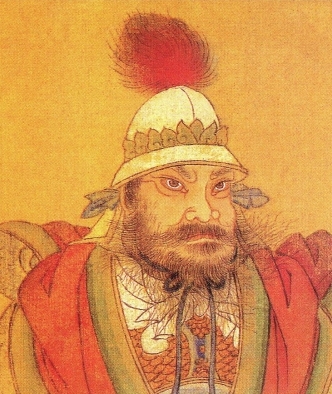Teaching World History Through An Ethnic Studies Perspective
World history is full of stories of human struggle and accomplishment, but those stories are often presented from a limited, Eurocentric perspective. Teaching world history through an ethnic studies perspective can help to broaden our understanding of the past and present by emphasizing the diversity of experiences and contributions of people of color. This approach to teaching world history allows students to make meaningful connections to today’s diverse and multicultural society, while also opening up a dialogue around issues of power, privilege, and oppression. By focusing on the intersections of race, class, gender, and sexuality, teachers can provide a more comprehensive understanding of the world’s past and present.
Defining Ethnic Studies
Ethnic Studies is an interdisciplinary field of study that centers on the experiences of people of color and their contributions to society. It is an analysis of power structures, racism, and colonialism, and includes the study of race, ethnicity, gender, sexuality, and national identity. It covers a range of topics, including history, culture, language, politics, and economics. It examines how race and ethnicity have been constructed and how they have played out in the world. It looks at how people of color have been portrayed in the media, how they are represented in the classroom, and how they have been portrayed in literature. Ethnic Studies also examines the impact of racism and colonialism on people of color and how they have responded to these oppressive forces. Ethnic Studies provides students with the opportunity to explore the roots of injustice and to gain a deeper understanding of the complexities of race and ethnicity. By teaching World History through an Ethnic Studies perspective, students can gain a more comprehensive understanding of the past and its implications for the present and future.
The Benefits of Teaching World History Through an Ethnic Studies Perspective
World History is often taught from a Eurocentric point of view, ignoring the experiences of people of color. This is not only unfair and inaccurate, but it also does a disservice to our students. Teaching World History through an Ethnic Studies perspective helps to create a more inclusive learning environment, one that recognizes and celebrates the contributions of all cultures. By doing this, students gain a more comprehensive view of the world, understand the complexity of global dynamics, and recognize the value of diversity.
Ethnic Studies also provides students with an opportunity to analyze and discuss topics such as colonialism, imperialism, and racism. By providing a framework for understanding the experiences of people of color across the world, students can develop a deeper understanding of the world’s many cultures and how they have been shaped by events and policies. Additionally, this approach to teaching World History encourages students to think critically and create their own interpretations of history.
Finally, teaching World History through an Ethnic Studies perspective is a great way to foster intercultural understanding and respect. By learning about different cultures, students can gain a better understanding of different perspectives and appreciate the richness of different cultures. This kind of understanding is vital in today’s increasingly connected and diverse world.
In conclusion, teaching World History through an Ethnic Studies perspective has many benefits for both students and educators. By providing a more comprehensive and inclusive view of the world, students can gain a more comprehensive understanding of the world’s cultures, think critically, and foster intercultural respect. This approach to teaching World History should be embraced by educators everywhere.
Examining the Curriculum Through an Ethnic Studies Lens
As educators, it is important for us to recognize how our curriculum and our teaching of world history can affect our students’ perception of the world and their place in it. An ethnic studies perspective can be an invaluable tool in teaching world history, helping us to better engage our students in an understanding of global history that is more inclusive and diverse. Through an ethnic studies lens, we can analyze our curriculum and our teaching practices to make sure they are reflective of the global community.
In this blog, we will discuss why it is important for educators to consider an ethnic studies perspective when teaching world history. We will look at how incorporating an ethnic studies perspective into our curriculum can help students gain a more comprehensive understanding of world history and how it impacts them today. Finally, we will explore how an ethnic studies approach can help to foster an appreciation for cultural diversity and create an environment of inclusivity and understanding within our classrooms.
By examining our curriculum and teaching practices through an ethnic studies lens, we can create a more inclusive and diverse learning environment for our students. We can help them to gain a better understanding of world history and open their eyes to the complexity and diversity of the global community. In doing so, we can create an environment where our students can explore, learn, and grow in an atmosphere of understanding and appreciation for different cultures and histories.

Incorporating Primary Sources and Non-Traditional Texts
The study of world history is often taught through a Eurocentric lens, with primary sources and texts that primarily focus on the histories of Western-dominated societies. This educational approach fails to provide a comprehensive and accurate understanding of world history and its many cultures. Fortunately, incorporating an Ethnic Studies perspective into world history classes can help students gain a wider understanding of the world and its people.
In order to teach world history through an Ethnic Studies perspective, teachers can incorporate primary sources and non-traditional texts. Primary sources, such as oral histories, visual artifacts, and written documents from various cultures, can provide students with a direct connection to history and offer insight into the perspectives of those cultures. In addition, non-traditional texts such as historical novels, poetry, and other forms of literature can offer students a more creative and engaging way to learn about world history.
By incorporating primary sources and non-traditional texts into their lessons, teachers can create an environment that encourages students to think critically about history and challenge traditional narratives. This kind of learning experience will help students gain a more informed and nuanced understanding of world history and its many cultures.
The Role of Technology in Teaching World History Through an Ethnic Studies Lens
Technology has revolutionized the way in which we learn and teach. In the case of world history, technology can be a powerful tool to explore and understand the complexities of different cultures and how they have shaped our global societies. By using technology, teachers can open up avenues for students to better understand the importance of an ethnic studies perspective in teaching world history.
From interactive digital maps to virtual reality simulations, technology allows students to gain a broad understanding of how cultures are connected and how they have evolved throughout history. Additionally, this technology can help students to gain an understanding of the diversity of cultures, and how different ethnicities have contributed to the development of society.
The use of technology can also help students to develop a more critical lens through which to view world history. By researching primary sources, students can gain an insight into perspectives and opinions that may be different to their own. Additionally, students can gain an understanding of how global events have shaped the cultural and political landscapes of today.
Ultimately, the use of technology in teaching world history through an ethnic studies perspective can open up a range of possibilities for students to learn and engage in meaningful conversations about the histories and experiences of different cultures. By introducing technology into the classroom, students can gain a greater understanding of the complexities of world history and develop a more nuanced appreciation of different cultures.
Strategies to Promote Inclusivity and Intercultural Understanding
As educators, it is essential to nurture an understanding of the complex and interconnected world history. This can be accomplished through an ethnic studies perspective, which seeks to challenge and disrupt traditional Eurocentric perspectives that have been perpetuated in classrooms for centuries. Through the use of an ethnic studies approach, educators can create an inclusive learning space that promotes intercultural understanding and collaboration.
One effective strategy for teaching world history through an ethnic studies perspective is to create lessons that focus on cultural artifacts and texts. This approach provides an opportunity to explore various cultures from an emic perspective, allowing for a more holistic understanding of the history and culture of a particular group. Additionally, incorporating primary sources, such as documents, photographs and oral histories, allows students to gain a deeper understanding of the history and culture of a particular group.
In addition to incorporating primary sources, educators can use an interdisciplinary approach to teaching world history through an ethnic studies perspective. This involves teaching history through a variety of lenses, such as literature, art, anthropology, sociology, and economics. By looking at the same event or time period from multiple angles, students can gain a more comprehensive understanding of the complexities of world history and gain insight into the various perspectives of different cultures.
Finally, educators can foster an inclusive learning environment by integrating diverse perspectives into the classroom. This can be done through the use of guest speakers, field trips to culturally relevant sites, and the use of culturally relevant materials. These strategies can help to create an environment where students can learn about different cultures in an authentic and meaningful way.
By utilizing these strategies, educators can create an engaging learning environment that promotes intercultural understanding and allows students to explore the complexities of world history through an ethnic studies perspective.
FAQs About the Teaching World History Through An Ethnic Studies Perspective
1. What is ethnic studies?
Ethnic studies is an academic field devoted to the study of race, ethnicity, and indigeneity. It combines history, sociology, political science, and other disciplines to look at how different cultures have interacted and contributed to the wider society.
2. What are the benefits of teaching world history through an ethnic studies perspective?
Teaching world history through an ethnic studies perspective allows students to explore the experiences and contributions of people of different cultures in a meaningful and holistic way. It also encourages critical thinking and encourages students to think about how different cultures have interacted in the past and how this affects the present.
3. How can teachers use an ethnic studies approach to teaching world history?
Teachers can use an ethnic studies approach to teaching world history by examining the contributions of different cultures and exploring the connections between them. This can be done through readings, discussions, and activities that focus on different cultures and their history. Additionally, teachers can bring in primary sources such as photos, videos, and artifacts to bring the subject to life.
Conclusion
The use of an ethnic studies perspective in teaching world history is an effective way to provide an inclusive approach to teaching world history. By exploring different cultural perspectives, students are able to engage in rich conversations about the diversity of cultures and experiences that have shaped the world we live in. In addition, this approach can help to foster an environment of respect and understanding for different cultures, while helping students develop a deeper appreciation for the history and complexity of the world.






